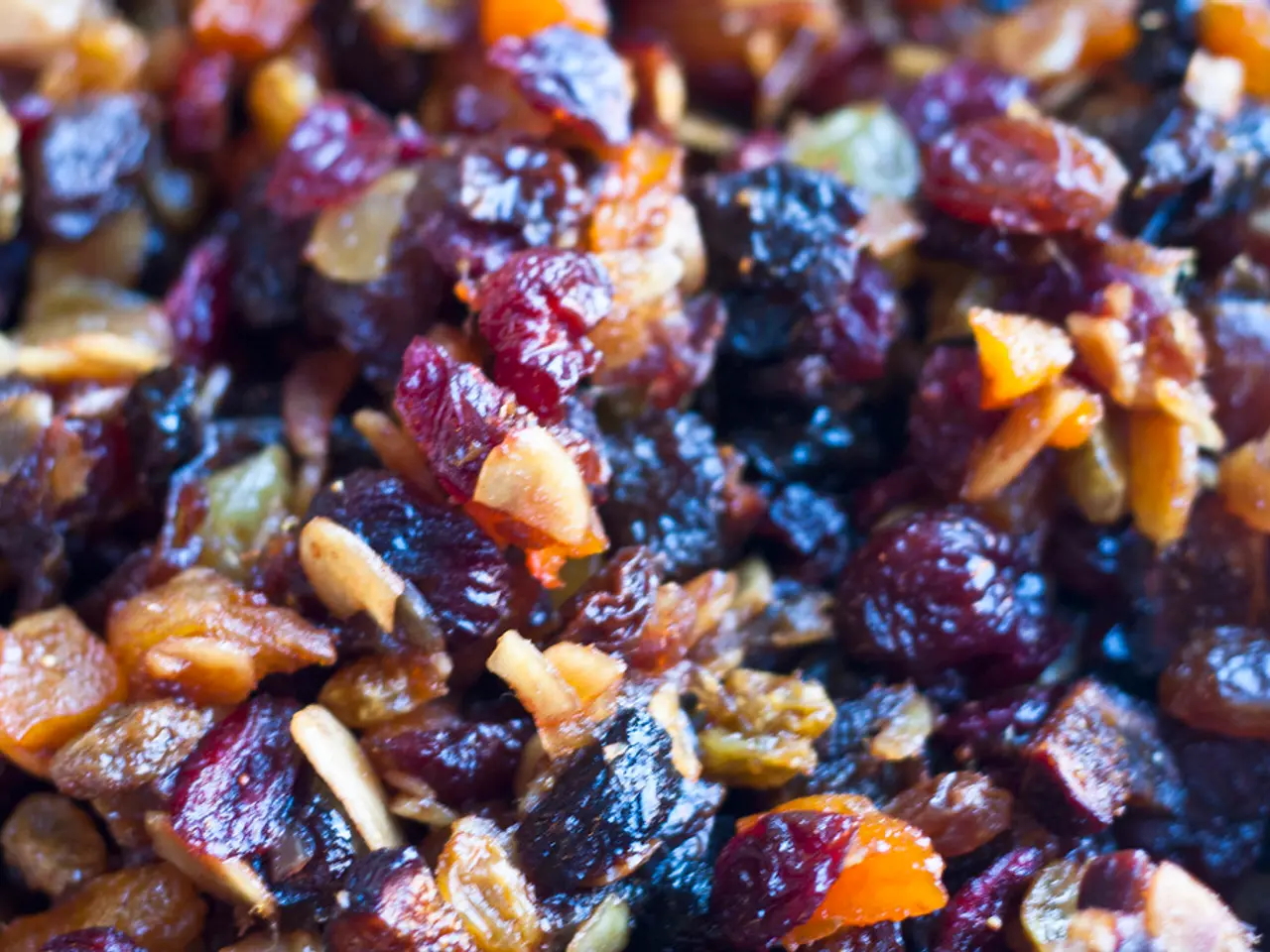Diet with reduced histamine levels: Consuming permissible foods and abstaining from high-histamine ones
**Managing Histamine Intolerance: A Guide to a Low Histamine Diet**
For individuals struggling with symptoms such as itching, swelling, hives, runny nose, watery eyes, sneezing, asthma, headaches, abdominal pain, flatulence, diarrhea, tachycardia, and hypotension, a low histamine diet may offer relief. Histamine, a chemical the body produces in response to foreign substances and injury, can cause these symptoms in people with histamine intolerance.
A low histamine diet involves avoiding certain foods that are naturally high in histamine, promote histamine release, or worsen histamine intolerance symptoms. Common high-histamine foods to avoid include aged or hard cheeses (like Parmesan, cheddar, gouda), cured or processed meats (salami, deli meats, ham, sausages), fermented foods and vegetables (pickles, sauerkraut, olives), certain fish and shellfish, tomatoes, eggplant, mushrooms, certain nuts, alcohol, and certain fruits such as avocados, bananas, pineapples, strawberries, citrus fruits, plums, and watermelon.
Foods that trigger the release of histamine but may not be high in histamine themselves, known as histamine liberators, should also be avoided. These include chocolate, fish, banana, pineapple, strawberries, alcohol, artificial dyes and additives.
In addition to these foods, garlic and onions, soy sauce and fermented soy products, vinegar and vinegar-containing foods, and certain grains like barley, rye, and wheat are often avoided due to potential histamine or intolerance issues.
A low histamine diet focuses on consuming fresh meats and fish (cooked fresh), certain fresh fruits and vegetables (those low in histamine), and avoiding processed, fermented, or aged products to minimize histamine exposure and immune activation.
A phased approach to the low histamine diet, involving 10 to 14 days of avoiding histamine foods followed by up to 6 weeks of reintroducing foods, allows someone to determine their histamine tolerance. This approach can help manage symptoms and improve quality of life for those with histamine intolerance.
Before embarking on any restrictive diet, it is recommended to seek expert nutritional counseling to ensure adequate nutrient intake and to avoid an unnecessary reduction in quality of life. An individualized approach to diet is often best for people with intolerances, as factors such as medication, stress levels, and overall health affect what works for them.
When dining out, it is important to contact restaurants about ingredients to manage histamine intolerance. Shopping more frequently can help ensure the freshness of food, and eating foods as soon as possible after purchase can help reduce histamine levels.
While a low histamine diet may help reduce symptoms of histamine intolerance and allergies, there is limited evidence to suggest the diet may be helpful for some people. If a person suspects something they are taking is exacerbating their symptoms, they should speak to their doctor. Keeping a food journal can be useful for recording symptoms and triggers in people with histamine intolerance.
[1] Source: National Institute of Allergy and Infectious Diseases (NIAID) [2] Source: American College of Allergy, Asthma, and Immunology (ACAAI) [3] Source: British Dietetic Association (BDA) Low FODMAP Dietitians
*This article is for informational purposes only and does not constitute medical advice. Always consult a healthcare professional for personalized advice.*
- For people dealing with symptoms like eczema, depression, bipolar, or multiple sclerosis, a low histamine diet could potentially provide relief as well, since it focuses on avoiding food triggers that might exacerbate symptoms.
- People with psoriatic arthritis or NSCLC (non-small cell lung cancer) could also benefit from adopting other nutrition practices alongside a low histamine diet, as maintaining overall health and wellness, workplace-wellness, fitness-and-exercise, skin-care, and therapies-and-treatments are crucial for managing these conditions.
- In case weight-management becomes a concern while following a low histamine diet, it's essential to consider seeking advice from dietitians or nutrition experts to develop balanced, customized meal plans in order to ensure a healthy weight and adequate intake of essential nutrients.
- Science supports the use of antihistamines as a treatment for histamine intolerance, but for those who prefer a more natural approach, adopting a low histamine diet or other alternative nutrition strategies can potentially alleviate symptoms.
- Other nutrition practices worth considering for those with histamine intolerance include swapping high-histamine foods with low-histamine alternatives, such as choosing fresh fruits like apples instead of avocados, bananas, or watermelon.
- Furthermore, applying science-backed skin-care products can help manage the symptoms of histamine intolerance affecting the skin, as dermatitis and rashes are common among those with this condition.
- People with histamine intolerance should strive for an approach that encompasses a healthy lifestyle, including a balanced diet, regular exercise, stress management, and proper work-life balance, to manage symptoms and improve their quality of life.
- A Q (Applied Qualitative Research) study found that individuals with histamine intolerance had improved symptoms and overall wellbeing with the implementation of a low histamine diet, making it a valuable tool in health-and-wellness for these individuals.
- It's essential to remember that while a low histamine diet can provide significant relief for some, factors such as medication, stress levels, and health conditions can vary greatly between individuals, making a personalized, holistic approach to wellness the most effective.
- If a person is unsure whether their current nutrition plan is working for them or if they suspect another condition, such as arthritis, may be contributing to their symptoms, they should consult with a healthcare professional for accurate diagnosis and personalized guidance on how to manage their condition effectively.




